-
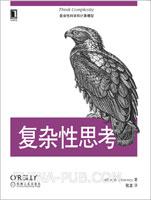
复杂性思考
本书的灵感来源于无聊与迷恋的感觉:对常规的数据结构与算法介绍的无聊,对复杂系统的迷恋。数据结构的问题在于教师在教授这门课程的时候通常不会调动起学生的积极性;复杂性科学的问题在于学校通常不会教授这门课程。 2005年,我在欧林学院讲授了一门新课程,学生要阅读关于复杂性的主题,使用Python进行实验,并学习算法与数据结构。当我在2008年再次讲授这门课程时,我写了本书的初稿。 在2011年第3次讲授这门课程时,我准备出版该书并邀请学生们以案例研究的形式提交其工作成果并包含在书中。我在欧林学院找了9位教授成立了项目委员会,选择可供出版的报告。符合标准的案例研究被纳入到本书中。我们将在下一版吸纳来自读者的更多稿件(参见附录A)。 对教师的建议 本书可以用作Python编程与算法的大学中级课程教材。我的教学遵循如下结构: 阅读 复杂性科学涵盖了各种主题。这些主题之间相互关联,但需要花费不少时间才能搞清楚这些联系。为了帮助学生们看到全景,我会向他们介绍一些阅读列表,这些都来自于该领域最流行的研究成果。我的阅读列表以及关于如何使用它的建议在附录B中。 练习 本书提供了一系列练习;很多练习都要求学生重新实现一些开创性实验并对其进行扩展。复杂性吸引人的一个地方在于我们可以通过适当的编程技能与数学知识接触研究前沿。 讨论 书中的主题提出了关于科学哲学的问题,这需要学生们进一步阅读并进行课堂讨论。 案例研究 在我的课堂上,我们将几乎半个学期的时间都用在了案例研究上。学生们经由构思产生过程、形成团队,并在一系列实验上花费6~7周的时间,然后以4~6页可发表的报告形式来呈现其工作成果。 可以通过https://sites.google.com/site/compmodolin了解课程大纲与我的说明。 对自学者的建议 在2009~2010年,我作为Google的一名访问学者在其剑桥办公室工作。在与我共事的软件工程师中,让我印象深刻的一点是他们广博的求知欲以及增长知识与技能的动力。 我希望本书能够帮助像他们一样的人们来探索他们可能遇不到的一些主题与想法,练习Python编程技能,以及学习关于数据结构与算法的更多知识(或者看看有哪些内容不适合放在第1版中)。 本书针对自学者的一些特点有: 技术深度 -
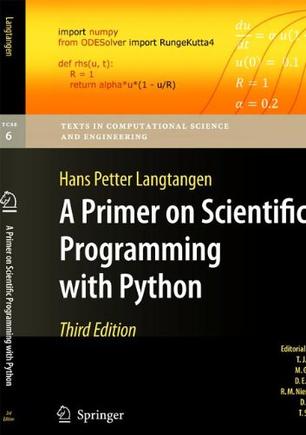
A Primer on Scientific Programming with Python
The book serves as a first introduction to computer programming of scientific applications, using the high-level Python language. The exposition is example- and problem-oriented, where the applications are taken from mathematics, numerical calculus, statistics, physics, biology, and finance. The book teaches "Matlab-style" and procedural programming as well as object-oriented programming. High school mathematics is a required background, and it is advantageous to study classical and numerical one-variable calculus in parallel with reading this book. Besides learning how to program computers, the reader will also learn how to solve mathematical problems, arising in various branches of science and engineering, with the aid of numerical methods and programming. By blending programming, mathematics and scientific applications, the book lays a solid foundation for practicing computational science. -
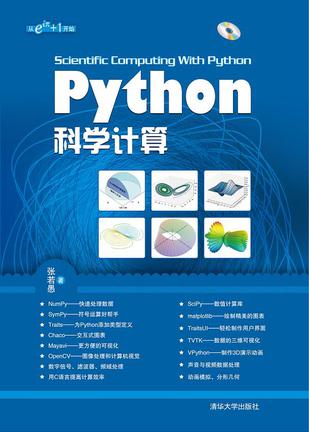
Python科学计算
本书介绍如何用Python开发科学计算的应用程序,除了介绍数值计算之外,还着重介绍如何制作交互式的2D、3D图像,如何设计精巧的程序界面,如何与C语言编写的高速计算程序结合,如何编写声音、图像处理算法等内容。书中涉及的Python扩展库包括NumPy、SciPy、SymPy、matplotlib、Traits、TraitsUI、Chaco、TVTK、Mayavi、VPython、OpenCV等,涉及的应用领域包括数值运算、符号运算、二维图表、三维数据可视化、三维动画演示、图像处理以及界面设计等。 书中以大量实例引导读者逐步深入学习,每个实例程序都有详尽的解释,并都能在本书推荐的运行环境中正常运行。此外,本书附有大量的图表和插图,力求减少长篇的理论介绍和公式推导,以便读者通过实例和数据学习并掌握理论知识。 -

Python科学计算
本书介绍如何用Python开发科学计算的应用程序,除了介绍数值计算之外,还着重介绍如何制作交互式的2D、3D图像,如何设计精巧的程序界面,如何与C语言编写的高速计算程序结合,如何编写声音、图像处理算法等内容。书中涉及的Python扩展库包括NumPy、SciPy、SymPy、matplotlib、Traits、TraitsUI、Chaco、TVTK、Mayavi、VPython、OpenCV等,涉及的应用领域包括数值运算、符号运算、二维图表、三维数据可视化、三维动画演示、图像处理以及界面设计等。 书中以大量实例引导读者逐步深入学习,每个实例程序都有详尽的解释,并都能在本书推荐的运行环境中正常运行。此外,本书附有大量的图表和插图,力求减少长篇的理论介绍和公式推导,以便读者通过实例和数据学习并掌握理论知识。 -
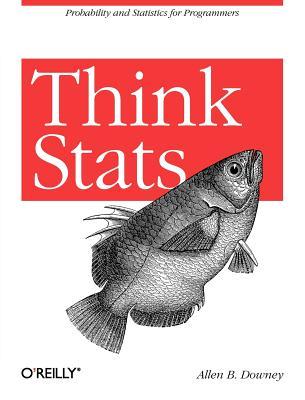
Think Stats
If you know how to program, you have the skills to turn data into knowledge using the tools of probability and statistics. This concise introduction shows you how to perform statistical analysis computationally, rather than mathematically, with programs written in Python. You'll work with a case study throughout the book to help you learn the entire data analysis process—from collecting data and generating statistics to identifying patterns and testing hypotheses. Along the way, you'll become familiar with distributions, the rules of probability, visualization, and many other tools and concepts. Develop your understanding of probability and statistics by writing and testing code Run experiments to test statistical behavior, such as generating samples from several distributions Use simulations to understand concepts that are hard to grasp mathematically Learn topics not usually covered in an introductory course, such as Bayesian estimation Import data from almost any source using Python, rather than be limited to data that has been cleaned and formatted for statistics tools Use statistical inference to answer questions about real-world data -
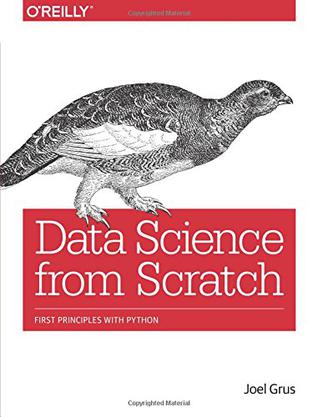
Data Science from Scratch
Data science libraries, frameworks, modules, and toolkits are great for doing data science, but they’re also a good way to dive into the discipline without actually understanding data science. In this book, you’ll learn how many of the most fundamental data science tools and algorithms work by implementing them from scratch. If you have an aptitude for mathematics and some programming skills, author Joel Grus will help you get comfortable with the math and statistics at the core of data science, and with hacking skills you need to get started as a data scientist. Today’s messy glut of data holds answers to questions no one’s even thought to ask. This book provides you with the know-how to dig those answers out. Get a crash course in Python Learn the basics of linear algebra, statistics, and probability—and understand how and when they're used in data science Collect, explore, clean, munge, and manipulate data Dive into the fundamentals of machine learning Implement models such as k-nearest Neighbors, Naive Bayes, linear and logistic regression, decision trees, neural networks, and clustering Explore recommender systems, natural language processing, network analysis, MapReduce, and databases